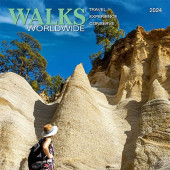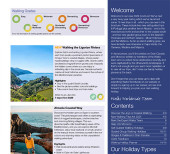On any of our trips packing light is always advised and in the outdoor community the ability to pack light is often seen as a tell-tale sign of the veteran walker. It is unfortunate that most travellers end up packing too much – we’ve all been there, lugging our 20kg backpack around airports and hotels only to never to never use half of what you have. In the end it’s your enjoyment that’s at stake, pack too little and you go without, pack too much and you (or the Sherpa) have to carry it!
One little tip is to pack twice. I often lay out my items on the floor and then put them into my bag knowing full well that I’ll be unpacking some of the items again once I’ve zipped it up and felt the weight. However, the only tried and tested tip is to pack only what you really need. Here are a few suggestions.
Hot or Cold?
The dangerous thing about deserts is the heat, or rather people’s understanding of the heat. Of course we want to pack cool clothing that covers you up from all the sand and protects you from the sun. However, it’s the less obvious things that catch us out and the heat is frequently the last of people’s problems. It can get very cold in the desert at night and packing for desert walking is not just about long sleeved shirts and synthetic trousers.
I tend to pack two sets of clothes on any walking trip, one to get dirty and one to keep clean. For the ‘dirty’ outfit it’s important to pack layers so that you have the ability to strip down or warm up on the move. Naturally these want to be as lightweight as possible so you can carry what you need in your day pack. I’ll start out the walk in lightweight walking trousers and a long-sleeved shirt, but always carrying something warm in my daypack.
These days the lightweight fleece is a walker's best friend and I’ve owned the same North Face Expedition Shirt (which is a fleece!) for about 10 years and it’s been with me everywhere. It’s warm, loose fitting, durable and fits easily into a small day sack. Despite the levels of abuse it’s suffered over the years it’s still the first thing I pack when I need a warm lightweight layer I can trust. If you’re staying out overnight you’ll want a down jacket and woolly hat – you may never use it, but you’ll certainly miss it if you do!

Footprints in the Sand
It’s a constant problem for the jet-setting walker, look around any airport and you’ll see travellers wearing big clumpy boots onto a flight only because it doesn’t fit conveniently into their luggage. When it comes to packing for deserts, one thing you don’t have to worry about is the rain and this opens up a whole new world to the ever soggy British walker.
Trekking in a desert means even the chunky orthodox walking boot can be left at home in favour of a lighter more supple option. This is when I pick up my Rogue Boots – hand made in South Africa with the desert and savannah in mind, these are the most comfortable walking shoes I’ve ever owned. They do a suede desert boot, which is incredibly lightweight and easy to pack and I find wearing these without socks is fine in hot weather. You can even screw these up into a ball and pack at the bottom of your bag. For more strenuous or diverse treks their RB2 light trail boot replaces suede with leather and offers more protection.

Rocking the Kasbah
Looking at the locals is another reliable way of learning how to pack. The Shemargh is a popular Middle Eastern headdress popularly adapted by members of the British Army (and later skinny jean-wearing Indie rockers of the late 2000’s). It’s as useful at home as it is overseas. Traditionally used as a headdress to protect against heat and sunburn, this is only one of the uses and it can be utilised in a variety of ways. I’ve dowsed mine in water to cool down, covered my face in sandstorm, used it as a pillow in my tent, substituted it as a towel and even on one occasion improvised a sling for a damaged arm!

Keep hydrated
Last but certainly not least… water. It’s no secret that water is a valuable commodity to any walker, especially in the desert. When looking for a day-pack try to get one with a hydration system built in, or at least one with a space for a bladder. You should be drinking around 1 litre an hour in the desert, and it’s really only doable if you can drink on the move. Hydration salts are also a good thing to keep to hand – they taste awful, but it’s a quick and easy way to replace lost salts and get hydrated again.
Inspired? Let us take you there…










